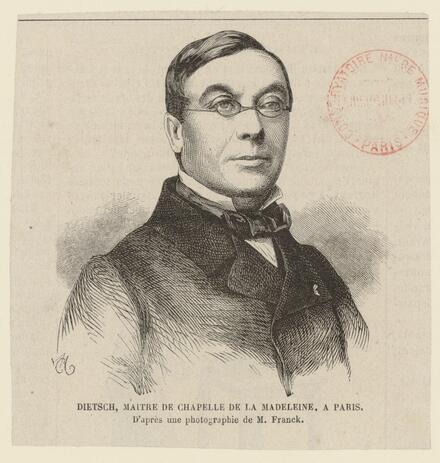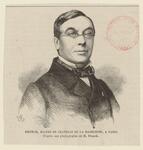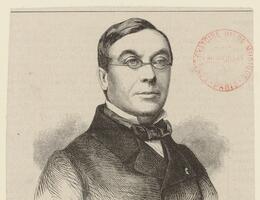
Pierre-Louis DIETSCH
1808 - 1865
Conductor, Composer
The son of a hosiery manufacturer from Germany, Pierre-Louis Dietsch was given his first music lessons at the choir school in Dijon cathedral, before going to Paris to study under Alexandre Choron. He then entered the Paris Conservatoire, where he attended the counterpoint and fugue class taught by Reicha and won the Premier Prix for double bass in 1830 (Chenié’s class). He began his career working both in the church (organist at the Missions Etrangères, then choirmaster at Saint-Eustache) and the theatre (at the Théâtre-Italien, then at the Paris Opéra, as a double bassist). This dual focus determined the rest of his career: he was singing teacher (from 1840 to 1860) then conductor at the Paris Opéra (1860-1863), as well as choirmaster at the Madeleine (1849-1865). When the Ecole Niedermeyer was founded (1853) to continue Choron’s teaching practices, he taught several classes there. For this reason, he was Gabriel Fauré’s first tutor in harmony. As a composer, he concentrated mainly on religious music. Le Vaisseau fantôme, an opera in two acts premiered at the Paris Opéra in 1842, and based on a scenario by Wagner (which the latter re-used in 1843 for Der Fliegende Holländer) is therefore unique in his catalogue, which mainly comprises masses (25) and motets (32). As part of his ongoing teaching duties, Dietsch also published some educational works (Manuel du maître de chapelle, 1864) and some compilations of works intended for choir schools and organists.





